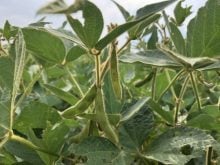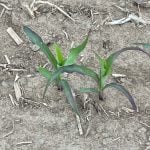Increased intended Prairie canaryseed acreage this spring, as reported by Statistics Canada last week, is seen as surprising given the lack of demand, and limited price competitiveness with other crops.
"Overall demand for birds is down so much, canaryseed is just not needed," said Maurice Coupal of GrainEx International at Sedley, Sask., about 50 km southeast of Regina.
Coupal said there is not enough demand to drive production contracts and justify the increase in intended acres.
Some of the lack of demand seen in canaryseed in recent years has been tied to dwindling interest in canaryseed food, as buyers see canaryseed as a luxury item that gets cut during tough economic times, he said.
Read Also

U.S. livestock: Cattle regain ground, hogs dip
Chicago cattle futures regained ground on Wednesday after falling off a cliff late last week. Most-active December live cattle contracts…
The lack of interest for canaries from a younger generation is also an undermining factor in canaryseed demand, he said.
StatsCan’s intended-acreage report on April 24 showed farmers plan to seed about 275,000 acres in Saskatchewan, up from 235,000 acres seeded last year.
"Continue to struggle"
Coupal said he does not believe the 275,000 will be planted, as declining export demand will push on acreage interest downward.
Some of the declining export demand is tied to increased pressure from Ukraine and Kazakhstan supplying the rest of the European market, he said.
Canaryseed, he said, is currently not competitive with any other crops.
In Saskatchewan, canaryseed averages 1,000 to 1,200 pounds per acre, he said, and at 25 cents a pound, equaling $250 an acre, that would hardly break even.
Canaryseed prices would have to around the 40-cent level to compete with canola and other crops, he said.
The end of the Canadian Wheat Board’s single marketing desk for Prairie wheat, durum and barley could potentially weigh on canaryseed prices, as farmers look towards the more profitable spring wheat and durum crops, he said.
"Canaryseed has lost its glow and charm in the past 10 years. It’s struggled and will continue to struggle until the crop is dead," Coupal said.
Current canaryseed spot bids were between 26.5 and 27 cents a pound, according to data from Prairie Ag Hotwire. That’s unchanged from two weeks ago and up between 0.5 and one cent per pound from a month ago.
New-crop canaryseed bids are going for between 25.5 and 26 cents.















